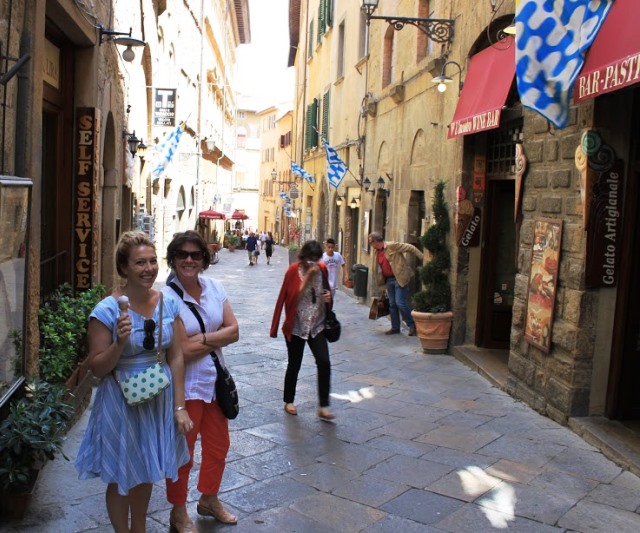


Boasting a perfectly preserved medieval appearance, Volterra is accessible via six massive, arched gates in the walls. When you enter the city center, it feels vibrant and lived in and, perhaps most importantly, it feels real. As if people actually live and work there, somehow less touristy than the surrounding (more popular) villages. We entered via the Porta Fiorentina (so named because it is the gate that leads in the direction of Florence), which used to house the town armory.





At the high point of the city lies a foreboding fortress, which has now been turned into (believe it or not) a state prison. Such an interesting use for an ancient building. Nobody else had any interest in looking at the prison, so I made DVC trek up the hill with me. Couldn't see much beyond the small fence, but I still found it fascinating. Many of the inmates held at this small facility are facing lifetime sentences, quite often for gang-related criminal activity (far from their Sicilian homes!). Super interesting: Prisoners Onstage.



Heading back down into the city, we wound our way through several beautiful neighborhoods. Volterra has a rich history in alabaster, so there are tons of alabaster shops where you can purchase goods and many workshops where you can watch sculptures being created. Because of the strong base in alabaster, many other artists were also drawn to the city. There are jewelers, wood workers, painters and a variety of other artisan shops lining many of the streets.









Gelato tasting. HEAVENLY.


The heart of the town can be found at the Piazza dei Priori, site of the 800 year old city hall (which claims to be the oldest building of this nature in Europe) and the center of civic life. The Palazzo still has it's partially-original clock tower (portions had to be rebuilt after an earthquake). This is arguably the most well-known building in Volterra (and also the site of some major vampire action in the Twilight series, because of course the evil Volturi would live and work underneath the city hall).




The beloved Rick Steves' told us that once we'd made it to the main piazza, to turn around and look for the black and white striped wall behind the Palazzo. I was STOKED to actually find it. Supposedly the black door in the corner led to a secret back entrance to a church (which people normally enter from the front entrance in the opposite piazza). Sadly, we couldn't get in.



Time for lunch! More Volterra to come...
No comments:
Post a Comment
Thank you for visiting! A penny for your thoughts...